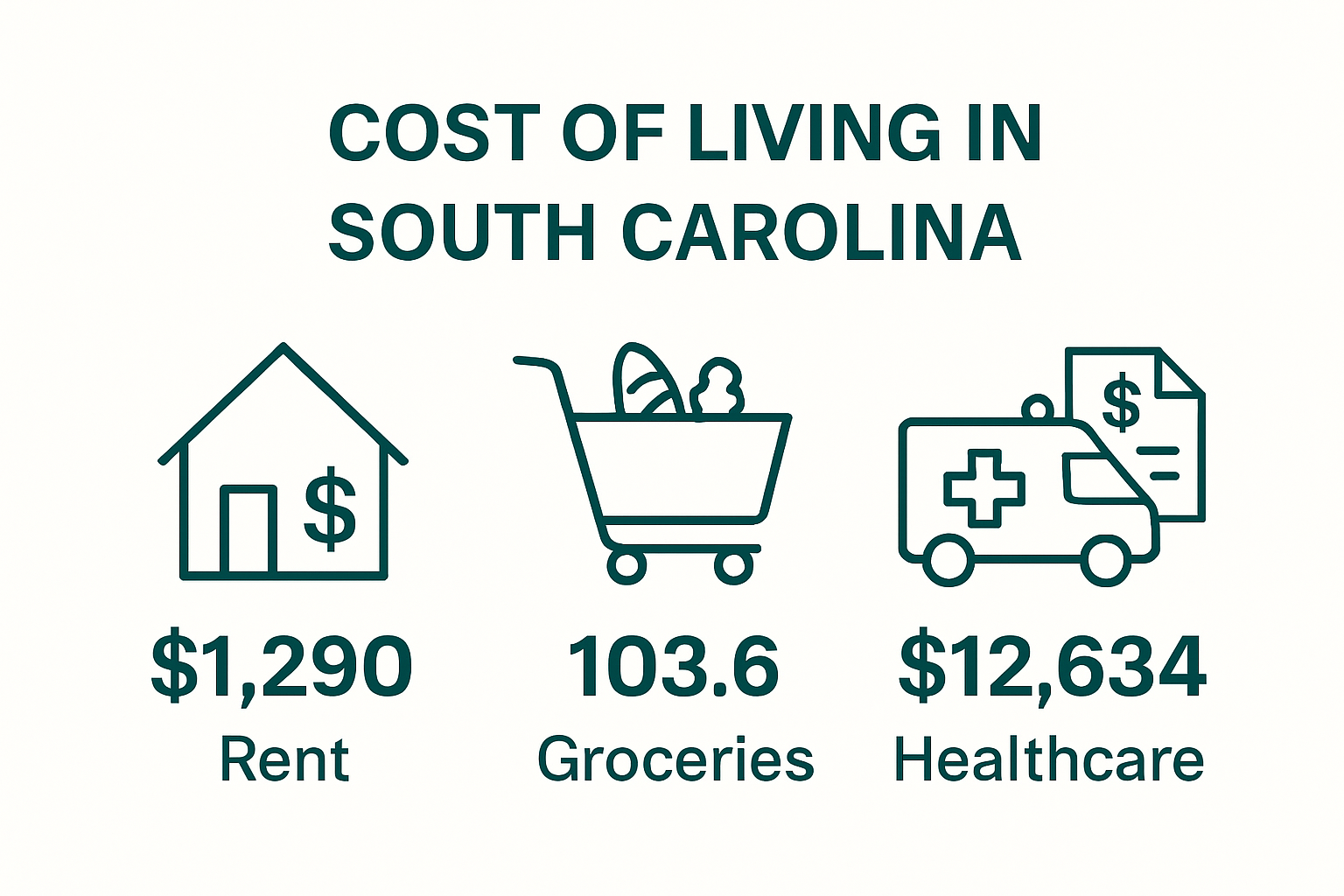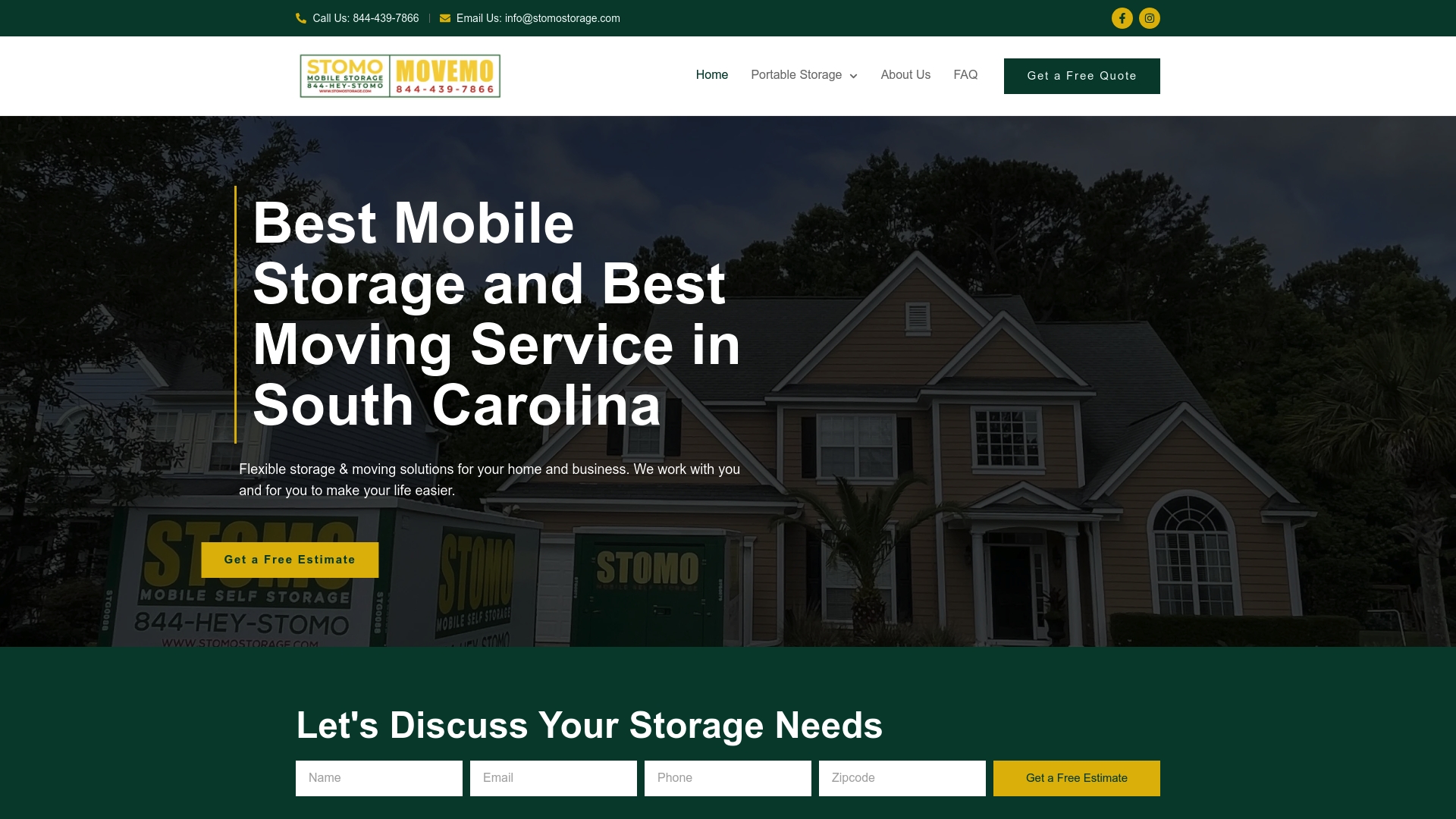Everyone wants more bang for their buck when choosing a place to live, and South Carolina stands out for more reasons than you might guess. Sure, the beaches are beautiful and the food is great, but the real surprise hides in the numbers. The cost of living in South Carolina is about 9 percent lower than the national average. That means more money left in your pocket each month, yet most people overlook how much those savings actually impact daily life.
Table of Contents
- What Constitutes The Cost Of Living In South Carolina?
- Why The Cost Of Living In South Carolina Matters For Residents
- How The Cost Of Living Affects Different Demographics In South Carolina
- Key Factors Influencing The Cost Of Living In South Carolina
- Real-World Examples Of Living Costs In Various South Carolina Regions
Quick Summary
| Takeaway | Explanation |
| Housing is the largest expense | Housing costs dominate living expenses, significantly impacting budgets and financial planning for residents. |
| Urban areas cost more than rural | Cities like Charleston and Columbia have higher living costs compared to rural communities, affecting lifestyle choices. |
| Living costs affect diverse demographics | Young professionals, families, and retirees face unique financial challenges, shaping their economic experiences in the state. |
| State tax policies influence expenses | South Carolina’s favorable tax structures create a more affordable environment, impacting overall cost of living. |
| Regional variations in living costs exist | Different areas within South Carolina present distinct living expenses, necessitating informed relocation decisions. |
What Constitutes the Cost of Living in South Carolina?
Understanding the cost of living involves analyzing multiple financial components that determine how affordable and sustainable daily life is within a specific region. In South Carolina, the cost of living reflects a complex interplay of essential expenses that impact residents’ economic well-being.
This table breaks down the main financial components that collectively determine the cost of living in South Carolina, providing clear definitions for each category discussed in the article.
| Expense Category | Description |
| Housing Costs | Mortgage or rent payments, property taxes, and home maintenance costs |
| Utilities | Monthly bills for electricity, water, internet, heating, and cooling |
| Transportation | Costs for vehicles, fuel, public transit, and maintenance |
| Food and Groceries | Expenses for restaurant dining and groceries for meals at home |
| Healthcare | Insurance premiums, routine medical visits, prescriptions, and emergency services |
Key Financial Components
The cost of living in South Carolina encompasses several critical categories that collectively shape household expenses:
- Housing Costs: Representing the most significant expense, including mortgage or rental payments, property taxes, and home maintenance
- Utilities: Monthly expenses for electricity, water, internet, and heating/cooling services
- Transportation: Vehicle expenses, fuel costs, public transit fees, and maintenance
- Food and Groceries: Daily nutritional expenses including restaurant meals and home-cooked food supplies
- Healthcare: Medical insurance, routine checkups, prescription medications, and emergency services
According to MIT’s Living Wage Calculator, these categories combine to create a comprehensive picture of financial requirements for South Carolina residents. The state offers a relatively affordable living environment compared to many national metropolitan areas.

Regional Cost Variations
Cost of living variations exist within South Carolina itself. Urban centers like Charleston and Columbia typically have higher expenses compared to rural areas. Coastal regions often command premium pricing for housing and services, while inland communities provide more budget-friendly alternatives.
For families and individuals considering relocation, understanding these nuanced financial dynamics becomes crucial. Learn more about moving to South Carolina to make informed decisions about your potential lifestyle and budget.
Comprehending the cost of living involves more than just calculating numbers. It requires understanding how different expenses interact, recognizing regional economic patterns, and planning strategically for personal financial sustainability in South Carolina’s diverse economic landscape.
Why the Cost of Living in South Carolina Matters for Residents
The cost of living represents more than just numbers on a spreadsheet. For South Carolina residents, it fundamentally shapes economic opportunities, personal financial strategies, and overall quality of life. Understanding its significance helps individuals and families make informed decisions about their future.
Economic Impact on Personal Financial Health
The affordability of a region directly influences residents’ financial well-being and long-term economic stability. In South Carolina, where the cost of living is approximately 9% lower than the national average, residents experience tangible financial advantages:
- Increased Disposable Income: Lower living expenses allow families to save more or invest in personal goals
- Enhanced Quality of Life: More affordable housing and services enable broader lifestyle choices
- Reduced Financial Stress: Manageable expenses contribute to overall economic resilience
According to Bureau of Economic Analysis, these economic dynamics create a more sustainable financial environment for South Carolina residents.
Strategic Life Planning
Cost of living considerations play a crucial role in major life decisions. For professionals, students, and families, understanding these economic nuances helps in:
- Evaluating job opportunities and potential relocation
- Planning long-term financial goals
- Assessing retirement affordability
- Determining educational and career investments
Explore strategies for successful South Carolina relocation to make more informed personal and professional choices.
Ultimately, the cost of living in South Carolina is not just an economic metric. It represents a complex ecosystem of opportunities, challenges, and potential for personal and professional growth. By understanding these dynamics, residents can navigate their financial landscape with greater confidence and strategic insight.
How the Cost of Living Affects Different Demographics in South Carolina
The economic landscape of South Carolina impacts various demographic groups differently, creating a complex tapestry of financial experiences and challenges. Understanding these nuanced variations helps residents and policymakers recognize the diverse economic realities within the state.
Young Professionals and Students
For emerging professionals and students, South Carolina presents both opportunities and economic hurdles. Lower living costs can be particularly advantageous for this demographic:
- Career Launching Pad: More affordable cities enable easier entry into professional markets
- Educational Investment: Reduced living expenses allow greater focus on skill development
- Financial Flexibility: Lower costs support entrepreneurial and personal growth initiatives
According to United For ALICE, 42% of state households face financial challenges, with young professionals being particularly sensitive to economic fluctuations.
Retirement and Senior Communities
Retirees find South Carolina particularly attractive due to its economic accessibility. Key considerations include:

- Affordable Housing: Lower property costs compared to northeastern states
- Tax-Friendly Environment: Favorable tax structures for retirement income
- Quality Healthcare: Reasonable medical service expenses
Discover relocation strategies for different life stages to understand how economic factors influence residential decisions.
Working Families and Middle-Income Households
Middle-income families represent the economic backbone of South Carolina. Their financial experience is characterized by:
- Balancing housing costs with income stability
- Navigating healthcare and education expenses
- Managing transportation and utility costs
The state’s relatively lower cost of living provides a buffer, allowing families to maintain a more comfortable standard of living compared to higher-expense regions. By understanding these demographic-specific economic dynamics, residents can make more informed financial decisions tailored to their unique life circumstances.
Key Factors Influencing the Cost of Living in South Carolina
Multiple interconnected economic elements shape the cost of living in South Carolina, creating a dynamic financial landscape that impacts residents’ daily experiences. Understanding these key factors provides crucial insights into the state’s economic ecosystem.
Geographic and Regional Dynamics
Geographic location plays a pivotal role in determining living expenses across South Carolina. Different regions present unique economic characteristics:
- Urban Centers: Cities like Charleston and Columbia demonstrate higher living costs
- Coastal Regions: Premium pricing for housing and services
- Rural Areas: More affordable housing and lower overall expenses
- Suburban Zones: Balanced cost structures offering compromise between urban and rural environments
These geographic variations significantly influence individual financial strategies and lifestyle choices.
Economic Infrastructure and Employment
Employment opportunities and economic infrastructure fundamentally drive living costs. Key considerations include:
- Job Market Diversity: Strength of various industry sectors
- Wage Levels: Correlation between local salaries and living expenses
- Economic Growth Potential: Emerging industries and development trajectories
According to U.S. Census Bureau, these economic factors directly impact residents’ purchasing power and financial stability.
Regulatory and Tax Environment
State policies and tax structures create additional layers of economic complexity:
- Property Tax Rates: Varying across different counties
- Income Tax Structures: Competitive compared to neighboring states
- Business Regulations: Impact on local economic development
Explore comprehensive relocation insights to understand how these regulatory environments influence overall living costs.
By comprehensively analyzing these interconnected factors, residents and policymakers can develop nuanced strategies for economic navigation, ensuring sustainable financial planning in South Carolina’s diverse economic landscape.
Real-World Examples of Living Costs in Various South Carolina Regions
Understanding the nuanced cost of living across South Carolina requires examining specific regional economic landscapes. Each area presents unique financial dynamics that significantly impact residents’ daily experiences and long-term financial planning.
Urban Centers: Charleston and Columbia
Urban regions demonstrate more complex and elevated living expenses compared to rural counterparts:
- Charleston: Median home prices around $450,000
- Columbia: More affordable housing with median prices near $250,000
- Typical Monthly Expenses:
- Utilities: $150-$250
- Groceries: $300-$400
- Transportation: $200-$350
These metropolitan areas offer diverse economic opportunities balanced against higher living costs, creating a complex financial environment for residents.
Coastal and Suburban Regions
Coastal communities like Myrtle Beach and suburban areas surrounding major cities present distinctive economic profiles:
- Myrtle Beach: Tourism-driven economy with variable living costs
- Greenville Suburbs: Growing tech corridor with competitive housing markets
- Hilton Head: Luxury market with premium pricing
According to MIT’s Living Wage Calculator, these regions demonstrate significant variations in required income levels and living expenses.
Rural and Small TownEconomics
Smaller communities offer more affordable living environments with unique economic characteristics:
- Aiken: Lower housing costs, stable employment opportunities
- Spartanburg: Emerging economic development with reasonable living expenses
- Rural Counties: Significantly reduced housing and daily expenses
Discover comprehensive relocation strategies to navigate these diverse regional economic landscapes.
By examining these real-world examples, potential residents can make informed decisions about where to live, work, and invest in South Carolina, understanding the intricate balance between expenses, opportunities, and lifestyle preferences.
To help readers compare how the cost of living varies across different regions of South Carolina, the following table summarizes key expense items for several notable areas as explained in the article.
| Region | Median Home Price | Typical Utilities (Monthly) | Groceries (Monthly) | Notable Features |
| Charleston | $450,000 | $150 – $250 | $300 – $400 | Urban center; highest housing costs |
| Columbia | $250,000 | $150 – $250 | $300 – $400 | Urban center; more affordable than Charleston |
| Myrtle Beach | Variable | Not specified | Not specified | Coastal/tourism-driven; living costs can fluctuate |
| Greenville Suburbs | Competitive | Not specified | Not specified | Suburban growth; tech-focused economy |
| Hilton Head | Premium | Not specified | Not specified | Luxury coastal market |
| Aiken | Lower | Not specified | Not specified | Rural setting; lower housing costs |
| Spartanburg | Reasonable | Not specified | Not specified | Small town; emerging economic development |
Ready for a Change? Make Your Move to or Across South Carolina Easier
Understanding the cost of living in South Carolina can bring up real worries about hidden expenses and managing your budget, especially when planning a major relocation or starting a home project. Lower cost of living should mean less stress, but too often, unexpected moving fees or inconvenient service make the transition harder than it ought to be. If you are relocating, downsizing, or searching for affordable storage, choosing the right local partner directly impacts your financial peace of mind and your quality of life—two topics discussed in the article above.
Find expert South Carolina moving and storage help right here

Avoid the hidden costs and impersonal service of big national brands by turning to a trusted, locally owned team. With STOMO Mobile Storage and MOVEMO Moving Service, you get transparent flat-rate pricing, award-winning service, and responsive, personalized support from a fellow South Carolina business. Discover how our mobile containers and concierge moving options bring you ease, affordability, and total control. Visit https://stomostorage.com now to get a local quote and see why so many South Carolina families and businesses trust us during times of change. Act today and make your move with confidence.
Frequently Asked Questions
What are the main factors that contribute to the cost of living in South Carolina?
The cost of living in South Carolina is influenced by housing costs, utilities, transportation, food and groceries, and healthcare expenses. Each of these components plays a significant role in determining overall affordability.
How does the cost of living in South Carolina compare to the national average?
The cost of living in South Carolina is approximately 9% lower than the national average, offering residents financial advantages in terms of disposable income and quality of life.
Are there significant cost of living differences between urban and rural areas in South Carolina?
Yes, urban centers like Charleston and Columbia generally have higher living expenses compared to rural areas, which often provide more affordable housing and lower overall costs.
How do demographic factors affect the cost of living in South Carolina?
Different demographic groups, such as young professionals, retirees, and middle-income families, experience varying economic challenges and opportunities, influenced by the affordability of housing, healthcare, and job markets in the state.
